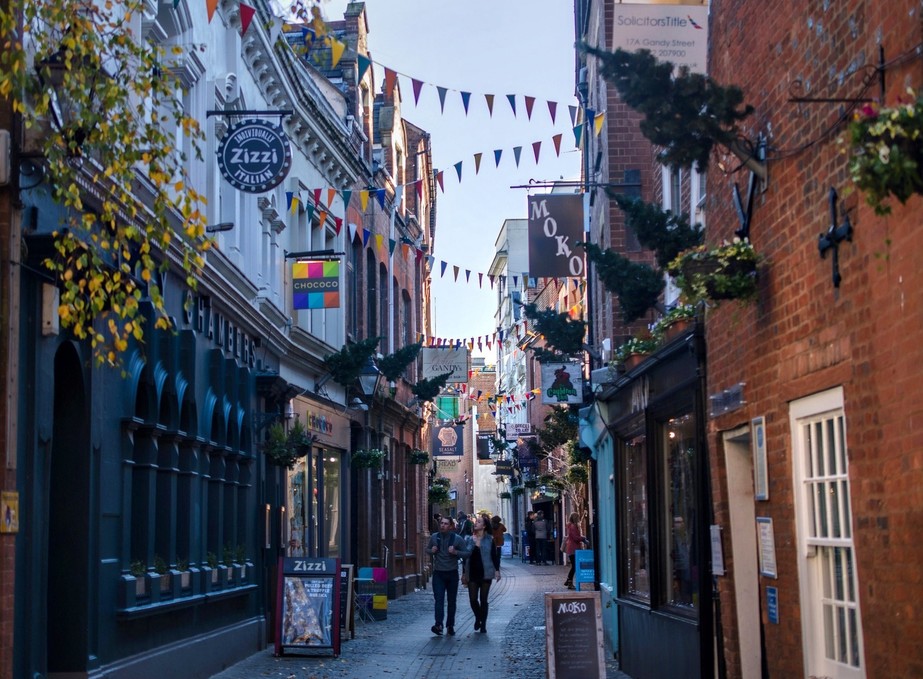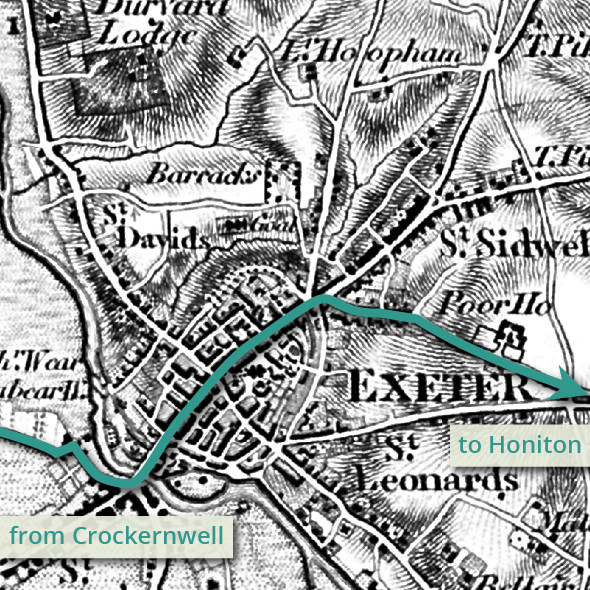Exeter
The Trafalgar Way plaque can be found on a granite block in front of the Civic Centre off Paris Street.
Return to overview

Gandy Street, Exeter. Image courtesy of Alison Day
Gandy Street, Exeter inspired the look of a famous street in the Harry Potter films. Photo © Alison Day
Heavitree
Heavitree is a historic village that was officially subsumed into the city of Exeter in 1913. Up until 1818 it was a place of execution and its name is thought to derive from the old English for “head tree” - a tree on which the heads of criminals were placed. It was in Heavitree that the last executions for witchcraft took place in England in 1682. The site of many executions is Livery Dole where you’ll find the chapel of Saint Clarus, dating from 1591 and built specifically to pray for the souls of the condemned.
Heavitree also boasts the fine Church of St Michael and All Angels. In 2002 a yew tree in the churchyard was included among “50 Great British Trees”. Heavitree Pleasure Ground contains a number of leisure facilities and could be a great place to capture an image of people enjoying the outdoors - but if you are taking photographs remember you will need to get anyone appearing prominently in a photo to sign a release which can be downloaded here.
Honiton Clyst, Cranbrook, Rockbeare, Fenny Bridges, Ottery St Mary
From Honiton Clyst the main road in 1805 would have been the London Road which next takes you to Cranbrook - a new town but still a suitable modern subject for a postcard from The Trafalgar Way. Next comes the small agricultural town of Rockbeare. Look out for Rockbeare Court, a late Georgian mansion while Rockbeare Manor, a magnificent Grade I listed Regency House, is nearby, although it is now a private wedding venue so you will need permission to visit.
Further along The London Road Lapenotiere would have passed The Fair Mile Inn which closed in 2003 when the A30 bypassed it. It is now converted into two houses.
Fenny Bridges has a place in history as the site of a battle in 1549 during the Prayer Book Rebellion, an uprising in Devon and Cornwall in protest at the introduction of the Book of Common Prayer. To the south lies Ottery St Mary where the poet Samuel Taylor Coleridge was born.
From Fenny Bridges The Trafalgar Way continues to Honiton.

The route through Exeter
While we can't know the exact route Lapenotiere took through Exeter, looking at the oldest OS maps, together with knowledge of the location of the posting inns of the day, gives us a good indication.
The plaque is outside the council offices on Southernhay, facing the Tourist Information Office.
Note the old bridge crossing from the Okehampton Road. It's located somewhere between the road bridges of today.
Have fun exploring!






